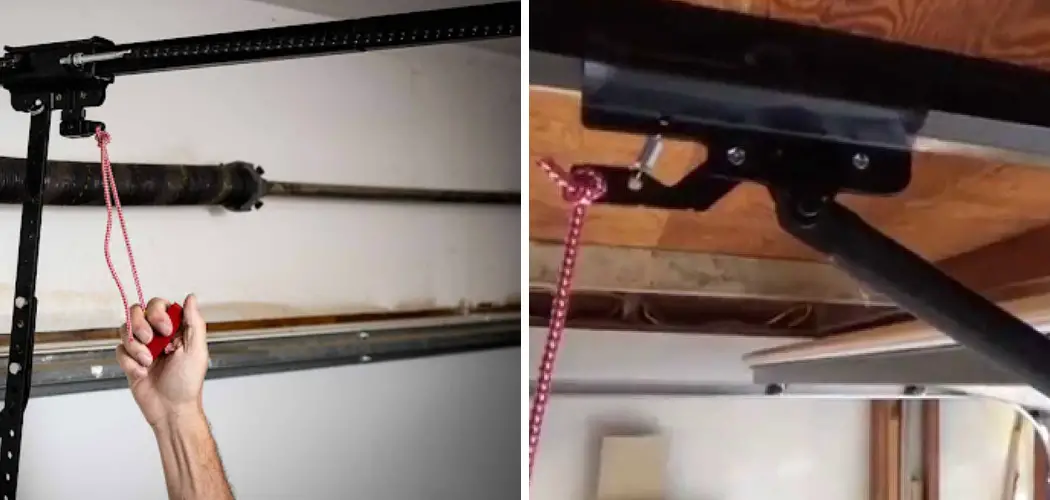A garage door is an essential part of any home that has a garage. It not only provides security for your vehicles and other belongings but also adds curb appeal to your property. However, like any other mechanical equipment, a garage door can experience issues over time, such as getting stuck or failing to close properly.

One of the most common problems with a garage door is when it becomes unlatched, leaving your garage and home vulnerable to potential break-ins. But worry not! In this guide, we will walk you through the steps on how to relatch a garage door quickly and easily.
Necessary Items
To relatch a garage door, you will need the following items:
- A ladder
- A screwdriver or power drill
- Replacement screws (if necessary)
- Lubricant spray (optional)
8 Things to Know Before You Start
1) Identify the Issue
When your garage door becomes unlatched, it’s essential to identify the root cause of the problem. Sometimes, it could be a simple fix, like an object blocking the latch or a loose screw. Other times, it may require more significant repairs or even professional assistance.
2) Check for Damage
Inspect your garage door and its components for any visible damage. It could be a broken latch, a bent track, or a damaged sensor. Identifying and addressing the issue will ensure that your garage door is functioning correctly before relatching it.
3) Gather Necessary Items
To relatch your garage door, you will need a few tools, such as pliers, a screwdriver, and possibly a hammer. Make sure to have these items on hand before starting the relatching process. If you do not have the necessary tools, consider purchasing them or borrowing from a neighbor.
4) Read the Manual
If your garage door comes with a manual, it’s always helpful to read it before attempting any repairs. The manual may contain specific instructions for relatching and can help you avoid making any mistakes that could cause further damage.
5) Prepare the Area
Before starting the relatching process, make sure to remove any objects or debris that may be blocking the garage door’s movement. This will prevent accidents and ensure a clear path for your repairs.

6) Safety First
It is crucial to prioritize safety when working with any mechanical equipment. Make sure to turn off the power supply to your garage door before attempting to relatch it. This will prevent any accidents and ensure your safety.
7) Ask for Assistance
Relatching a garage door can be challenging, especially if the latch is in an awkward position or requires significant repairs. Don’t hesitate to ask for assistance from a family member or neighbor if you feel overwhelmed or encounter any difficulties during the process.
8) Consider Professional Help
If you are unsure or uncomfortable with relatching your garage door, it is always best to seek professional assistance. A garage door repair specialist can help diagnose and fix any underlying issues with your garage door to prevent future problems.
Relatching a garage door may seem daunting at first, but with the right tools and knowledge, it can be a simple and straightforward process. Remember to prioritize safety, identify the issue, and gather all necessary items before starting.
If you encounter any difficulties or feel uncomfortable, do not hesitate to seek professional help. By following these steps, you can ensure your garage door is functioning properly and keep your home secure.
12 Steps on How to Relatch a Garage Door
Step 1: Identify the Problem
The first thing you need to do is identify why your garage door is not latching properly. Some of the most common reasons include a bent or damaged latch, loose screws, or debris blocking the latch. If you’re unsure, it’s best to call a professional for assistance.
Step 2: Turn Off the Power
Before attempting any repairs, make sure to turn off the power supply to your garage door. This will prevent any accidents and ensure your safety while working on the door. And remember, never attempt to work on a garage door if the power supply is still on.
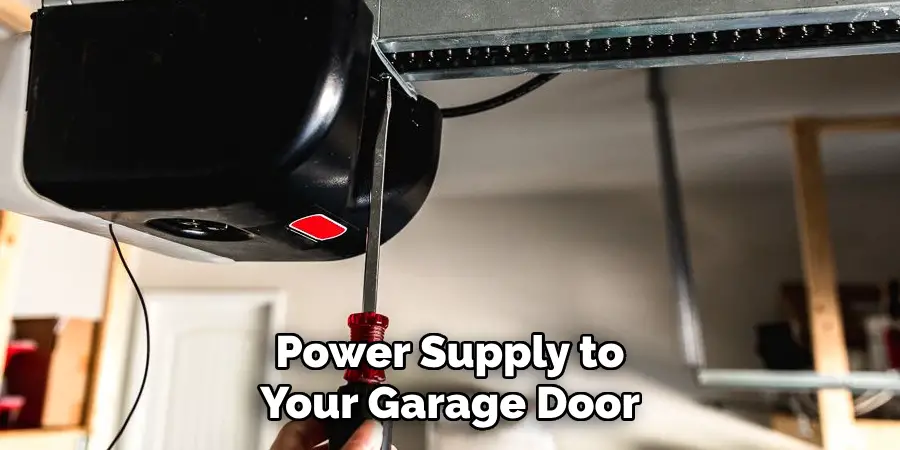
Step 3: Remove Obstructions
Clear any objects or debris that may be blocking the garage door’s movement. This will make it easier to access the latch and prevent any accidents while working. But be careful not to damage any components of the door while doing so.
Step 4: Gather Necessary Tools
Ensure that you have all the necessary tools on hand before starting the relatching process. This may include pliers, a screwdriver, and possibly a hammer, depending on the issue at hand. While you can purchase these tools, consider borrowing them from a neighbor if you don’t have them.
Step 5: Inspect the Latch
Inspect the latch to see if it is functioning correctly. If it’s bent or damaged, it may need to be replaced. If there are loose screws, tighten them with a screwdriver. And if there’s debris blocking the latch, remove it.
Step 6: Align the Latch
If the latch is misaligned, use pliers to straighten it out. Make sure that it is properly aligned with the door’s strike plate before moving on to the next step. However, if the latch is severely damaged, it may need to be replaced.
Step 7: Test the Latch
Close the door and test the latch to see if it catches on the strike plate. If it does not catch, make sure that it is correctly aligned and try again. If it still doesn’t work, there may be another underlying issue that needs to be addressed.
Step 8: Tighten the Screws
If the latch is functioning correctly but still not catching, check to see if there are any loose screws on the door or its components. Tighten them using a screwdriver to secure everything in place and ensure proper functionality.
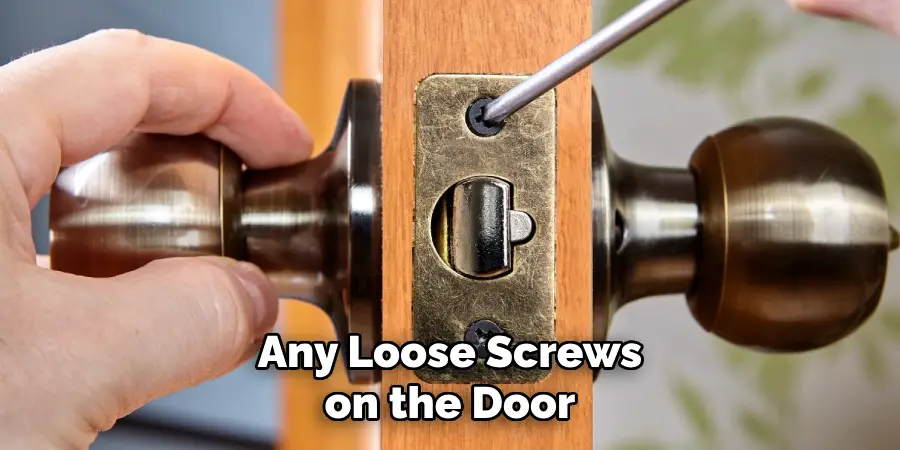
Step 9: Adjust the Strike Plate
If tightening the screws doesn’t work, you may need to adjust the strike plate. Use a screwdriver to loosen the screws holding it in place, move it slightly, and tighten the screws again. This should create a tighter fit between the latch and the strike plate.
Step 10: Lubricate Moving Parts
If your garage door still doesn’t latch even after following these steps, try lubricating any moving parts. This includes the latch, track, and hinges. Use a lubricant such as silicone spray or white lithium grease to reduce friction and promote smooth movement.
Step 11: Test Again
After completing all these steps, test the latch again to see if it’s working correctly. If it does not catch, there may be an underlying issue that requires professional assistance. It’s always best to seek help if you’re unsure or uncomfortable with the repairs.
Step 12: Restore Power and Safety Check
Once you have successfully reattached your garage door, restore power to it and test its functionality. Also, don’t forget to perform a safety check by ensuring that all components are secure and functioning correctly. This will prevent any accidents and keep your garage door running smoothly.
Overall, relatching a garage door may seem daunting, but by following these steps and prioritizing safety, you can successfully complete the task and ensure your home’s security. Now that you know how to relatch a garage door, you can confidently handle any latch issues that may arise in the future.
8 Things to Avoid When Relatching a Garage Door
1) Forgetting to Turn Off the Power
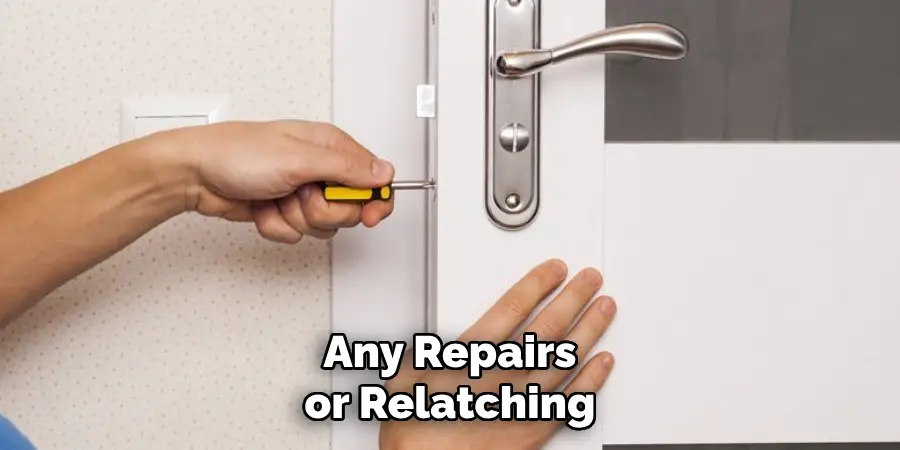
Always make sure to turn off the power supply to your garage door before attempting any repairs or relatching. This will prevent any accidents and ensure your safety. As a general rule, never attempt to work on a garage door if the power supply is still on.
2) Attempting Without Proper Tools
Relatching a garage door requires specific tools such as pliers and screwdrivers. Always make sure to have these tools on hand before starting the process. If you don’t have them, consider borrowing from a neighbor or purchasing them for future use.
3) Ignoring Safety Precautions
Safety should always be a top priority when working on any home repairs. Make sure to wear appropriate protective gear and follow safety guidelines to prevent accidents and injuries. If you feel uncomfortable or unsure, it’s best to seek professional help.
4) Not Identifying the Underlying Issue
Simply relatching a garage door may not solve the problem if there is an underlying issue. It’s essential to identify the root cause and address it to ensure the long-term functionality of your garage door.
5) Using Too Much Force
Applying too much force when relatching a garage door can cause damage to its components. Always use the appropriate amount of pressure and avoid excessive force, as this can lead to more significant issues in the future.
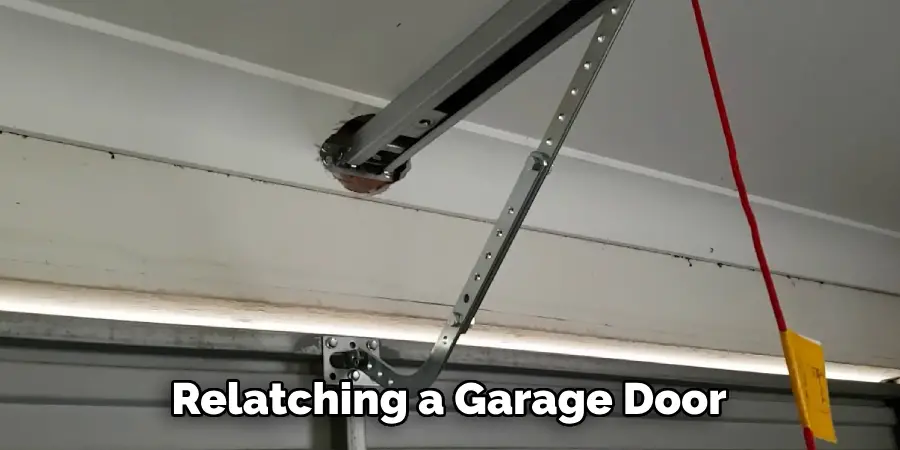
6) Neglecting Regular Maintenance
Regular maintenance of your garage door is crucial for its proper functionality. Don’t wait until an issue arises to take action; instead, perform routine checks and maintenance to prevent any major problems from occurring.
7) Skipping Steps or Rushing the Process
Properly relatching a garage door requires following each step carefully. Don’t skip steps or rush through the process, as this can lead to mistakes and potential safety hazards. Take your time and follow each step thoroughly for optimal results.
8) Not Seeking Professional Help if Needed
If you feel uncomfortable or unsure about relatching your garage door, it’s always best to seek professional help. Attempting repairs without proper knowledge or expertise can lead to further damage and costly repairs in the future. Don’t hesitate to call a professional for assistance.
In conclusion, avoiding these common mistakes while relatching your garage door will ensure a successful and safe repair process. Remember to prioritize safety, use appropriate tools, and seek professional help if needed for optimal results. So, the next time you encounter a latch issue with your garage door, you’ll be equipped with the knowledge and skills to handle it confidently.
8 Additional Tips for Proper Garage Door Maintenance
1) Regularly Clean and Inspect
Dirt, debris, and other contaminants can build up on your garage door over time, leading to potential damage. Make sure to clean it regularly with a mild detergent and inspect for any signs of wear or damage.

2) Lubricate Moving Parts
As mentioned earlier, lubricating moving parts is crucial for ensuring smooth functionality. Lubrication is recommended at least twice a year but more frequently in areas with extreme weather conditions.
3) Check for Balance
A properly balanced garage door is essential for its smooth operation. To test this, disconnect the opener and manually lift the door halfway. If it does not stay in place, there may be an issue with balance that requires professional assistance.
4) Tighten Loose Components
Vibrations and regular use can cause bolts, screws, and other components to become loose. Make sure to check and tighten any loose parts regularly to prevent further damage. And don’t forget to use the appropriate tools when doing so.
5) Replace Worn Out Parts
Over time, certain parts of your garage door may need to be replaced due to wear and tear. Keep an eye out for signs such as rust, cracks, or breaks, and replace them promptly to prevent further damage.
6) Inspect Weather Seals
Weather seals help protect your garage from outdoor elements and prevent energy loss. Regularly check for any signs of wear or damage and replace them if needed to maintain their effectiveness. When replacing, make sure to use the appropriate type and size.
7) Keep Remote Batteries Fresh
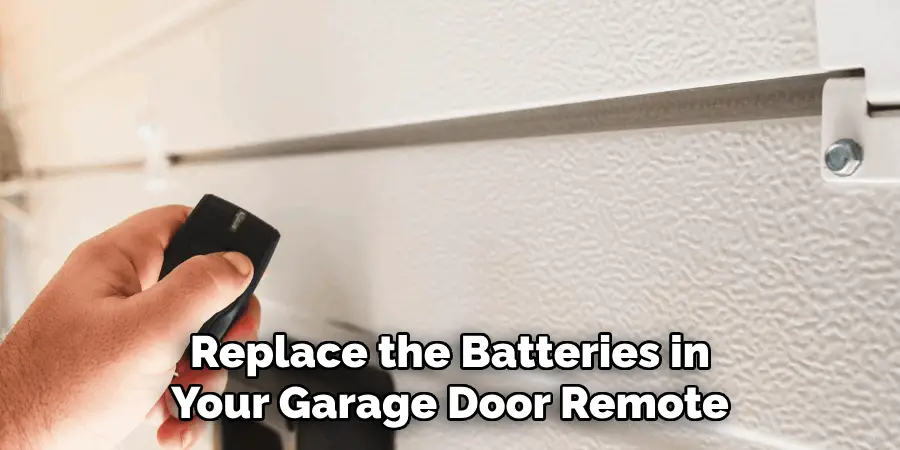
Don’t forget to replace the batteries in your garage door remote regularly. Using old or weak batteries can cause issues with opening and closing the door, leading to potential safety hazards. So make sure to keep fresh batteries on hand.
8) Schedule Professional Maintenance
To ensure the longevity and optimal functionality of your garage door, consider scheduling professional maintenance at least once a year. A trained technician can identify any potential issues and address them before they become major problems.
This will save you time, money, and hassle in the long run. By following these additional tips on how to relatch a garage door for proper garage door maintenance, you can prolong the life of your garage door and prevent any major issues from occurring.
Regular maintenance is key to keeping your garage door functioning smoothly and ensuring its safety for you and your family. So make sure to add these tasks to your home maintenance checklist for a well-maintained and efficient garage door.
Frequently Asked Questions About Relatching a Garage Door
How Can I Tell if My Garage Door Needs to Be Relatched?
Some signs that your garage door needs to be relatched include difficulty opening or closing, loose or misaligned latch, and visible damage to the latch mechanism. If you notice any of these signs, it’s best to address the issue promptly.
Can I Use Any Type of Lubricant for My Garage Door?
No, it’s important to use a lubricant specifically designed for garage doors. Using the wrong type can damage the components and affect functionality. Consult your manufacturer’s instructions or a professional for recommended lubrication products.
What Should I Do if My Garage Door Won’t Stay Closed Even After Relatching?
If your garage door continues to open or won’t stay closed after relatching, there may be an issue with the sensors or opener. It’s best to consult a professional for further assistance and diagnosis.
Can I Relatch My Garage Door on My Own?
It is possible to relatch a garage door on your own, but it requires proper knowledge and tools. If you feel uncomfortable or unsure, it’s best to seek professional help to avoid further damage or potential safety hazards.
How Often Should I Relate My Garage Door?
There is no set frequency for relatching a garage door, as it depends on various factors such as usage, weather conditions, and regular maintenance. However, if you notice any signs of wear or damage to the latch mechanism, it’s best to address the issue promptly.
Can I Use WD-40 to Lubricate Moving Parts?
WD-40 is not recommended for lubricating garage door parts, as it can attract dirt and debris, leading to potential damage. It’s best to use a silicone-based or lithium-based lubricant specifically designed for garage doors.
Is Regular Maintenance Necessary for Garage Doors?
Yes, regular maintenance is crucial for the proper functionality and longevity of your garage door. It’s recommended to schedule professional maintenance at least once a year, but you can also perform some tasks yourself, such as cleaning and lubricating. Remember, proper maintenance can prevent costly repairs and ensure the safety of you and your loved ones. So make sure to prioritize it for a well-maintained garage door.
Conclusion
Relatching a garage door may seem like a simple task, but it’s important to do it correctly to ensure its safety and functionality. Proper maintenance and care are crucial for your garage door’s longevity and functionality. By avoiding common mistakes and following these additional tips on how to relatch a garage door, you can ensure a safe and successful repair process, as well as prolong the life of your garage door.
Remember to prioritize safety, use the appropriate tools, seek professional help if needed, and perform regular maintenance to keep your garage door in top shape. So, the next time you encounter a latch issue or need to perform maintenance on your garage door, you’ll be well-equipped with the knowledge and skills to do so confidently.
I am Rick. I grew up helping my dad with his handyman service. I learned a lot from him about how to fix things, and also about how to work hard and take care of business. These days, I’m still into fixing things- only now, I’m doing it for a living.
I’m always looking for new ways to help people grow and develop. That’s why I have created this blog to share all my experience and knowledge so
that I can help people who are interested in DIY repair.

